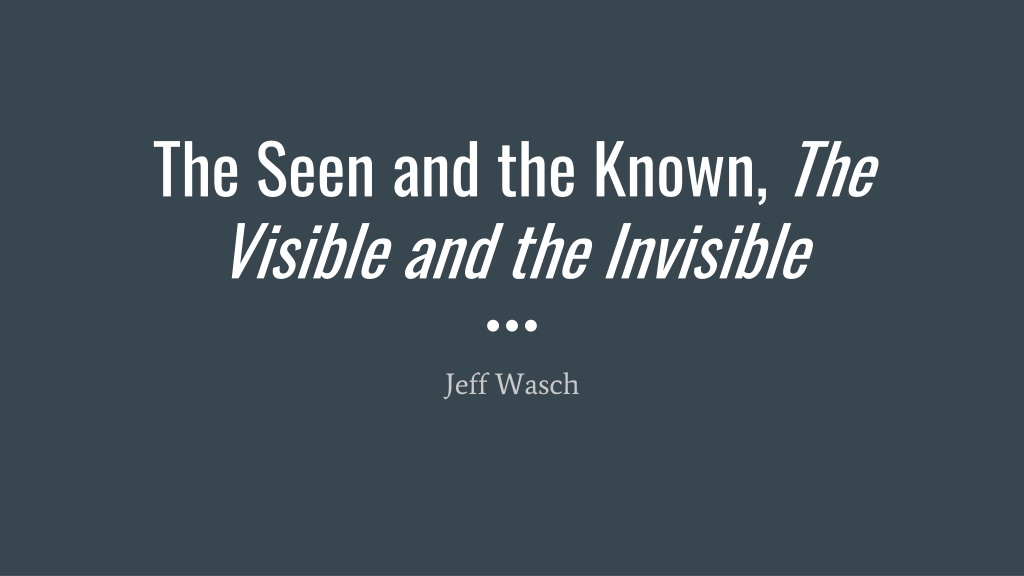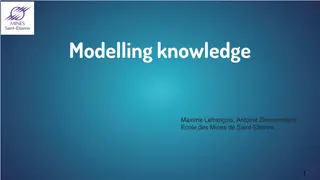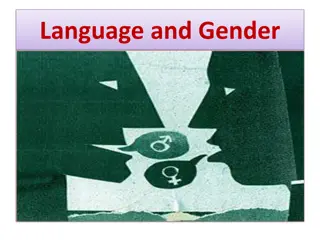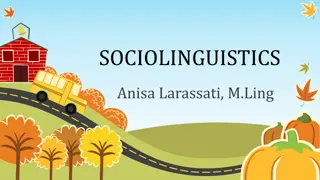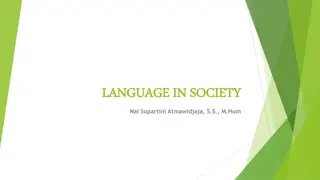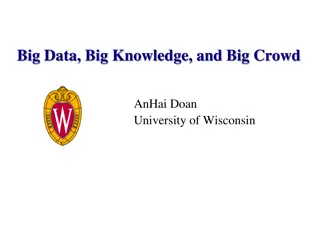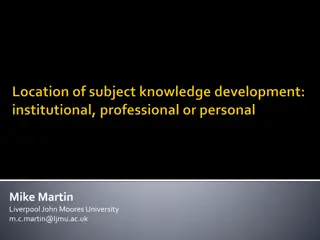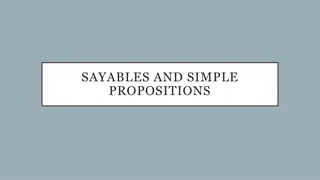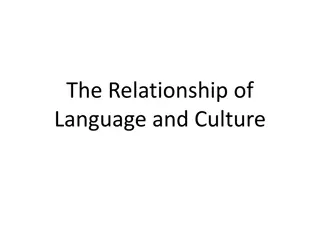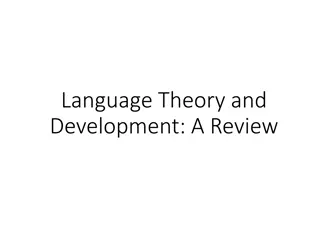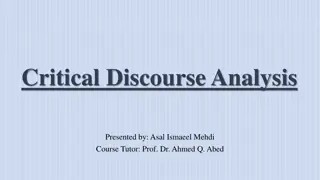Understanding the Relationship Between Language, Experience, and Knowledge
Exploring the intricate interplay between language, experience, and knowledge, this text delves into the roles of linguistic and nonlinguistic experiences in shaping our understanding and acquisition of knowledge. Various perspectives, including Sellars' Myth of the Given and Bonjour's distinctions between conceptual and nonconceptual content, are analyzed to elucidate the complexities of the human cognitive processes.
Download Presentation

Please find below an Image/Link to download the presentation.
The content on the website is provided AS IS for your information and personal use only. It may not be sold, licensed, or shared on other websites without obtaining consent from the author. Download presentation by click this link. If you encounter any issues during the download, it is possible that the publisher has removed the file from their server.
E N D
Presentation Transcript
The Seen and the Known, The Visible and the Invisible Jeff Wasch
Roadmap Preliminary definitions: the Given, experience, and concepts. The Problem The Phenomenological & Semantic Contents of Experience The Seen and the Known: The Chiasm Between the Sensible and Intelligable The Result
Background Definitions: The Epistemological Given: Known independent of any other kind of knowledge (ususally a kind of sense experience) Epistemically efficacious, provides foundation for knowledge. Experience: passive and active faculties working at the same time. Concepts: items of a public language.
The Problem What is the role of language in experience and knowledge? Defining Knowledge: Sellars (1997): Introduces the Myth of the Given Allowing the Given to have these two roles is problematic Knowledge is justifying and being able to justify what one says It follows from this that all knowledge is linguistic and/or conceptual Something like a Given remains as a kind of data, related to the senses, which our beliefs can be about. What about experience? Experience has a passive, nonconceptual level Given over by the senses. Answer: On the one hand, knowledge is purely linguistic, but, on the other hand, while experience has a linguistic level; it has a nonlinguistic, passive, sensory level as well. The Takeaway: If knowledge has to be linguistic, what is the role of experience in the acquisition of knowledge?
What is the Role of Nonlinguistic Experience in Knowledge Then? If there is conceptual and nonconceptual levels to experience, it implies that there is two kinds of content in experience, one conceptual and one nonconceptual. Bonjour (1999): There is a nonconceptual content (the Given) which is described by concepts in instances of perceptual knowledge. For Bonjour if we are (1) if a belief I have describes nonconceptual content and (2) I understand what that belief is describing, i.e. I understand what an experience is like to have such a conceptual description, then I am in good position to be justified in that belief. The role of experience is as a limited justifier. However, still two kinds of content, one linguistic, which makes up knowledge, and the other perceptual, and related to the senses. This resembles an idea from Merleau- Ponty, that there is a Chaism between the sensible and the intelligible, i.e. there is a gap between the senses and knowledge.
The Phenomenological & Semantic Contents of Experience Crane (2013): Phenomenological Contents: spaciotemporal, concrete, particular, and specific to the subject The Given Not knowledge: but can provide limited justification. Semantic Contents: Abstracted from phenomenological content Forms beliefs Conceptual/Linguistic Knowledge: can be about phenomenological content.
The Seen and the Known: The Chiasm Between the Sensible and Intelligable For Merleau-Ponty there is an chiasm between the sensible and the intelligible. (Toadvine, 2016). I want to clarify this idea: I suggest that this implies there is a distinction between the kind of content which we see in experience, and the kind of content which structures our knowledge. The Seen (the Phenomenological content): Given over by the senses. Nonconceptual in nature. Only limited justificatory power. The known (the Semantic content): Linguistic/conceptual. Constructs knowledge.
The Result The Visible and the Invisible (Merleau-Ponty, 1968): if speech, which is but a region of the intelligible world, can also be its refuge, this is because speech prolongs into the invisible, extends unto the semantic operations, the belongingness of the body to being and the corporeal relevance of every being, which for me is once and for all attested by the visible, and whose idea each intellectual evidence takes a little further Here, the Visible is what is Given over by the senses; while the Invisible is made up of language which makes the world intelligable . We never really see what we know Seeing is never believing
Works Cited Bonjour, Laurecne, The Dialectic of Foundationalism and Coherentism , in The Blackwell Guide to Epistemology, John Greco & Ernest Sosa (eds.) (1999) Brandom, Robert, Heidegger s Categories in Being and Time , in A Companion to Heidegger, Hubert Dreyfus & Mark Wrathall (eds.) (2005) Crane, Tim, The Given , in Mind, Reason, and Being-in-the-World: The Dreyfus- McDowell Debate, Joseph K. Schear (ed.), (2013) McDowell, John, Mind and World (1994) Merleau-Ponty, Maurice, The Visible and the Invisible (1968) Sellars, Wilfred, Empiricism and the Philosophy of Mind (1997)
